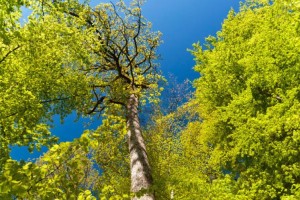 Mission
Mission
The mission of the Christina Conservancy is to promote the preservation, restoration, and appreciation of the historic and natural resources of the Christina River watershed.
The Conservancy seeks to achieve this mission by providing financial support, advocacy support, communication, education, and leadership in cooperation with state and local agencies, other non-profit organizations, businesses, residents, landowners, and user groups to:
- Provide appropriate and responsible access to the river and associated natural areas;
- Reduce water pollution to the Christina and its tributaries;
- Protect and enhance important natural and heritage areas of the watershed; and
- Engage people in stewardship of the watershed.
Vision
The Christina Conservancy envisions a Christina River and watershed with clean waters and healthy natural areas to support abundant fish and wildlife and ample opportunities for recreation and enjoyment of people, thanks to the good stewardship of residents and landowners, and effective regulation and management by agencies. The Christina Conservancy recognizes the importance of partnerships and appropriate land use to achieve this mission.
The Christina Conservancy envisions itself as a healthy, vibrant, grass-roots organization with the capacity to facilitate and support the actions needed by state and local agencies, other non-profit organizations, residents, homeowners, landowners, and user groups to make it’s vision a reality.
Goals, Objectives, and Strategies
Water Quality Goal: Improved water quality in the Christina River and its tributaries with a focus on the main stem
Objectives:
- A measurable reduction in water pollution in the main stem Christina River between 2018 and 2023 based on best available data/information
- Achievement of the fishable and swimmable standards in the main stem Christina River by 2100
Strategies:
- Update the status of water quality in the Christina River using new information from other groups
- Develop partnerships with the entities working on TMDLs (nitrogen, phosphorus, bacteria) to identify and pursue opportunities for filling funding gaps, providing advocacy support, and collaborating on education and outreach about water quality
- Continue coordinating with DNREC to support their work on reducing PCB contamination (through advocacy, funding, education
- Provide annual water quality information/education to key audiences (s.a. landowners, the press, volunteers) through the Conservancy’s annual meeting
- Where opportunities arise, support/promote priority projects and partners’ efforts to reduce water pollution in the watershed
Natural Areas Goal: To facilitate increased protection, ecological restoration, and/or enhancement of natural areas within the watershed.
Objective:
- Measurable increases in the amount, quality, and protection of priority natural areas in the watershed (especially wetlands and riparian forests)
Strategies:
- Establish a baseline of priority natural areas in the watershed using existing information from other groups (including DNS, NCC, and DNREC)
- Continue holding “bio-blitzes” along the riparian corridor that engage volunteers and experts to collect and track species data
- Develop and share literature to educate residents about invasive species and encourage individual landowner responsibility
- Establish and maintain partnerships with one or more of the primary groups that do land protection and management and promote/assist them in the protection/enhancement of priority natural areas, including at Cooch-Dayett Mills
- Identify and contact priority landowners about ways they can help improve the health of the watershed (land protection, removing junk, removing invasives) and who can help, using the annual meeting where feasible and appropriate for this purpose
- Advocate at the state/local level for land preservation funding and natural area protection/enhancement (including setback/buffers) and adoption/enforcement of associated laws/regulations
Community Engagement Goal: To engage residents and landowners in the stewardship of watershed resources
Objectives:
- Increased participation in the Christina River Cleanup and/or other Christina Conservancy Events
- Increased Christina Conservancy donorship/membership
- Increased understanding using a variety of outreach tools
Strategies:
- Create baseline and means for tracking progress on engagement objective
- Establish a stronger online presence for the Christina Conservancy by improving and sustaining the website and expanding into social media
- Redesign the Christina Conservancy brochure and develop a plan for using it (and other tools?) to recruit new members/donors
- Utilize annual meetings to help relay key messages and engage members/donors, primarily by using expert speakers on topics related to water quality, land stewardship, and responsible access
- Continue and grow the Christina Cleanup as a means for engaging people and improving natural areas
- Continue managing/growing the Edward W. Cooch, Jr. Scholarship fund for environmental education to make it sustainable
- Explore ways to utilize Dyatt Mills and DEEC to engage key audiences (donors, collaborators, and other key audiences)
- Explore doing an e-newsletter to address key needs and audiences (including those identified in this strategic plan) and consider new materials where needed
Community Access Goal: To promote responsible access to and connectivity between river corridors and associated lands
Objectives:
- Increase opportunities for river access
- Discouraged levels/types of recreational activities that are harmful to water quality, natural areas, and/or wildlife.
Strategies:
- Continue performing bio-blitzes along the riparian corridor
- Work with the County to maintain and update the data and access map created in 2016 identifying where access is existing/desireable/undesireable
- Utilize access map to promote/advocate/support increasing appropriate access
- Where opportunities arise, support/promote priority projects and partners’ efforts to increase appropriate access in the watershed
Community Access Goal: To be a nimble volunteer organization that relies on the expertise of its Board
Objectives:
- An engaged Board with a diversity of interests and expertise
- Sustainable funding to support key activities, like the cleanup and scholarship
- A membership that is growing in size and engagement
Strategies:
- Assess options and opportunities for building capacity using interns, paid staff, and/or contractors to address gaps identified in this strategic plan
- Recruit new Board members to fill critical needs
- Assess options and capacity for building a more active membership program
- Utilize the Christina Cleanup as opportunity to build support and connections.
- Utilize the Annual meeting to advance implementation of all aspects of the strategic plan

